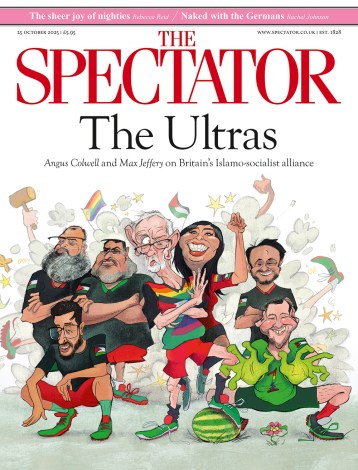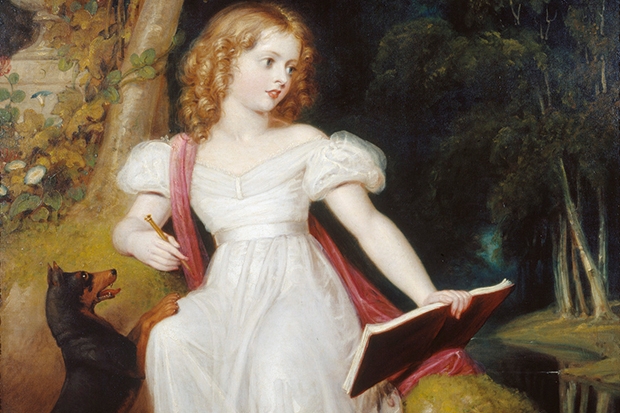Few monarchs could become novelists. They wouldn’t be able to develop the practice, or possess the necessary temperament. No monarch could sit in the corner of a room observing, or walk the streets unnoticed. They don’t have much of a chance of a long morning working quietly, without interruption, or of seeing what ordinary people are like at their most natural and unselfconscious. (Imagine what changes would have had to take place in Edward VII’s life before he could have thought of writing fiction.)
If they are never going to have the chance to observe and to write, they are also unlikely to have the disposition to do so. The future monarch will be assured from birth that his is the existence that matters. The world as seen through other eyes is a faint, unimaginable place, and the practice of the novel, which springs from wondering what it might be like to be other people, is not one an anointed king-emperor is likely to master.
To all of this Queen Victoria was an immense exception. She certainly did have the right character to be a novelist, even if most of the major influences of her life warned her against fiction — her mother, Lord Melbourne and Prince Albert thought novels an improper and wasteful distraction. Nevertheless, she read Oliver Twist with immense interest, and other masterpieces — along with some rather lesser works. Her secretary Ponsonby was once trapped into saying at the royal dinner table that Marie Corelli appealed to the ‘semi-educated’, not realising what a favourite she was with the Queen.
Victoria had an irrepressibly romantic nature, and public policy repeatedly found itself being directed by her weakness for figures like Melbourne and Disraeli. Beautiful German prince-suitors, reminiscent of the chivalric ideal — such as Sandro Battenberg, who married Moretta, the Queen’s Prussian granddaughter — were often favoured by Victoria for romantic rather than rational reasons. She loved a dramatic coup de théâtre, such as sending a telegram denouncing Gladstone’s conduct in Khartoum en clair, rather than in code, so that everyone along the line could read and disseminate it. Her imagination was seized by the lives of others. This was surely the appeal of John Brown, in particular, at Balmoral; in that Scottish remoteness, peculiar and unique lives could be retold without all the barriers that a queen’s position normally required. Indeed, Balmoral life enabled her to become a published author, with her two-volumed Leaves from the Journalof Our Life in the Highlands, of which she was very proud. When she finally met Dickens, she presented him with a copy inscribed with a humble comparison of their relative status as authors.
Glimpses of the novelist are evident in romantic scenes in her private journals and letters. The farewell to her daughter Vicky — who had just been crowned empress of Germany, and whose terminally ill husband was within a few days of a terrible death — is a good example of the type of writing the queen was capable of:
I kissed her again and again. She struggled hard not to give way, but finally broke down, and it was terrible to see her standing there in tears while the train slowly moved off, and to think of all she was suffering and might have to go through. My poor child, what would I not do to help her in her hard lot.
Victoria also had the novelist’s gift for the resonant detail, remembering in late middle age how disgusting it was to kiss her uncle George IV because of the ‘greasepaint’ he wore, and recording in her journal of the morning after her wedding the sexy details of Albert putting her stockings on her, and of watching him shave. The amazing ragbag of objects she was buried with — Albert’s dressing gown and a plaster cast of his hand, a lock of John Brown’s hair, rings, chains, lockets and her wedding veil — show how, like a novelist, she associated inert objects with individual lives and personal connections. She also had a good ear for dialogue. Melbourne leaps out of her early journals with his languid utterances: ‘I’m afraid to go to church for fear of hearing something very extraordinary,’ is recorded by her.

A lonely and isolated childhood had bred an intensely romantic, sympathetic imagination. Ponsonby acutely, rather than sycophantically, wrote that expressions such as ‘people like Queen Victoria’ or ‘that sort of woman’ could never be used: she did not ‘belong to any conceivable category of monarchs or of women’. The queen as novelist must remain unique.
It is a measure of how remote Victoria’s world view was from the current royal establishment that a newly discovered novel by her in early youth is being published merely as a minor curiosity. It is so extraordinary and fully achieved that doubts about Victoria’s sole authorship cannot be entirely stifled. The main character is Alice Laselles — a misspelling of Lascelles that any German would be prone to. Did her governess Baroness Lehzen have a major hand in it? If it is authentic, the novel is an amazing discovery. It is a very early school story, apparently written by Victoria aged ten. The girls’ school story had yet to reach its heyday, but its dramatic possibilities were clear even in the 1820s. I’m guessing that Victoria had read Mary Lamb’s popular Mrs Leicester’s School, which had reached its ninth edition by 1825.
In Victoria’s book, Alice is sent off to boarding school by her father — beginning, with thrilling confidence in medias res, with the line: ‘Oh do not send me away dear Papa.’ Her classmates include Diana O’Reilly, who had to be boarded out when her father returned from India to find that she had been raised by a nurse with an ‘uncouth’ appearance and an ‘unintelligible’ accent. There is a small mystery about a cat whose appearance is ascribed, wrongly, to Alice; and Alice’s grief over her dead mother, and her wicked stepmother, are set out with gusto, although they remain undeveloped motifs. There is one interesting piece of wish-fulfilment: Alice has what Victoria was never permitted — a bedroom of her own.
There is no doubt that the final production has been strictly guided and aided by others — this is not the artless outpouring of the passionate private journals. But I very much doubt whether Lehzen did more than correct it. The dramatic opening would have been beyond her, and there are bold imaginative leaps no governess would have dared to make. Did Diana O’Reilly come from encounters with Victoria’s mother’s factotum Sir John Conroy and his ghastly family? Perhaps another character, the proud, clever Barbara Somerville, the daughter of a London banker, was inspired by the small girl who years later remembered being taken to Kensington Palace and being told by a very correct playmate: ‘I may call you Jane, but you must not call me Victoria.’
The details are lost, but the general process of creation is undeniable. It reveals, however veiled by correctness and a neat copy made for presentation, an imagination of passionate conviction. I rather regret that the Royal Collection Trust is publishing it in such a stupid way: ‘A delightful and unique children’s story, which will still enchant and captivate every little princess today.’ To those of us fascinated by this wayward, extraordinary mind, it is a discovery of great interest and suggestiveness.






Comments